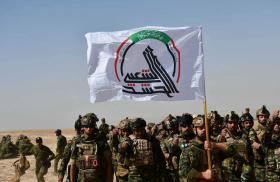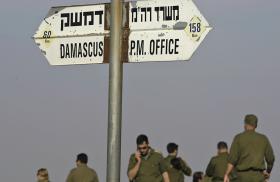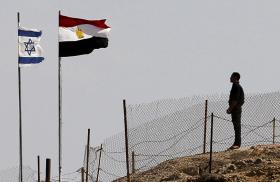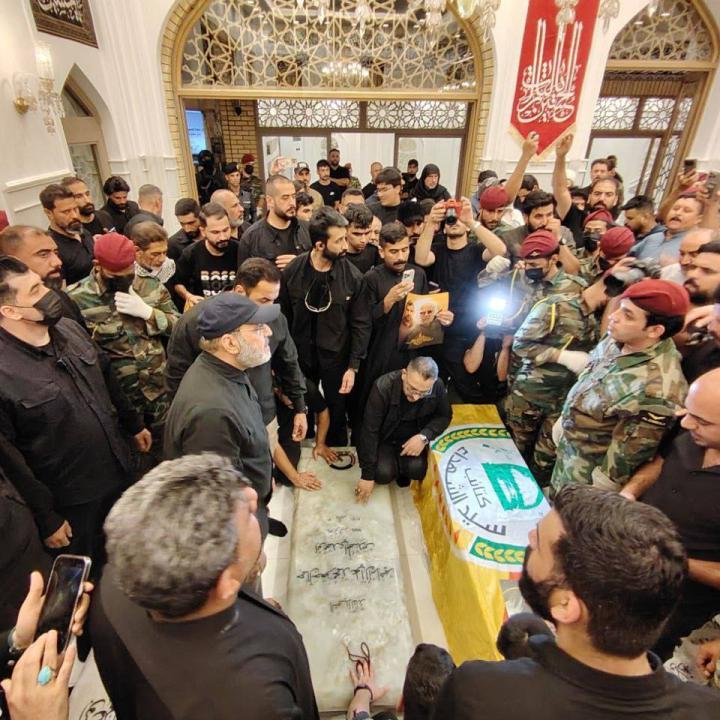
Israeli Strike Kills Head of Security for Iraqi Militia KSS

Haider al-Musawi may have been (unsuccessfully) securing the move of a senior Lebanese Hezbollah operative through Iraq into Iran.
On June 21, an apparent Israeli airstrike killed three militiamen after they crossed from Iraq into Iran. The best known of the three was Lebanese terrorist Abu Ali al-Khalil, a former bodyguard to slain Hezbollah leader Hassan Nasrallah. He died alongside his son, Mahdi al-Khalil. The third man was an Iraqi terrorist named Haider al-Musawi, whom the U.S.-designated, Iran-backed group Kataib Sayyid al-Shuhada (KSS) identified as their head of security at the time of his death (Figure 1).
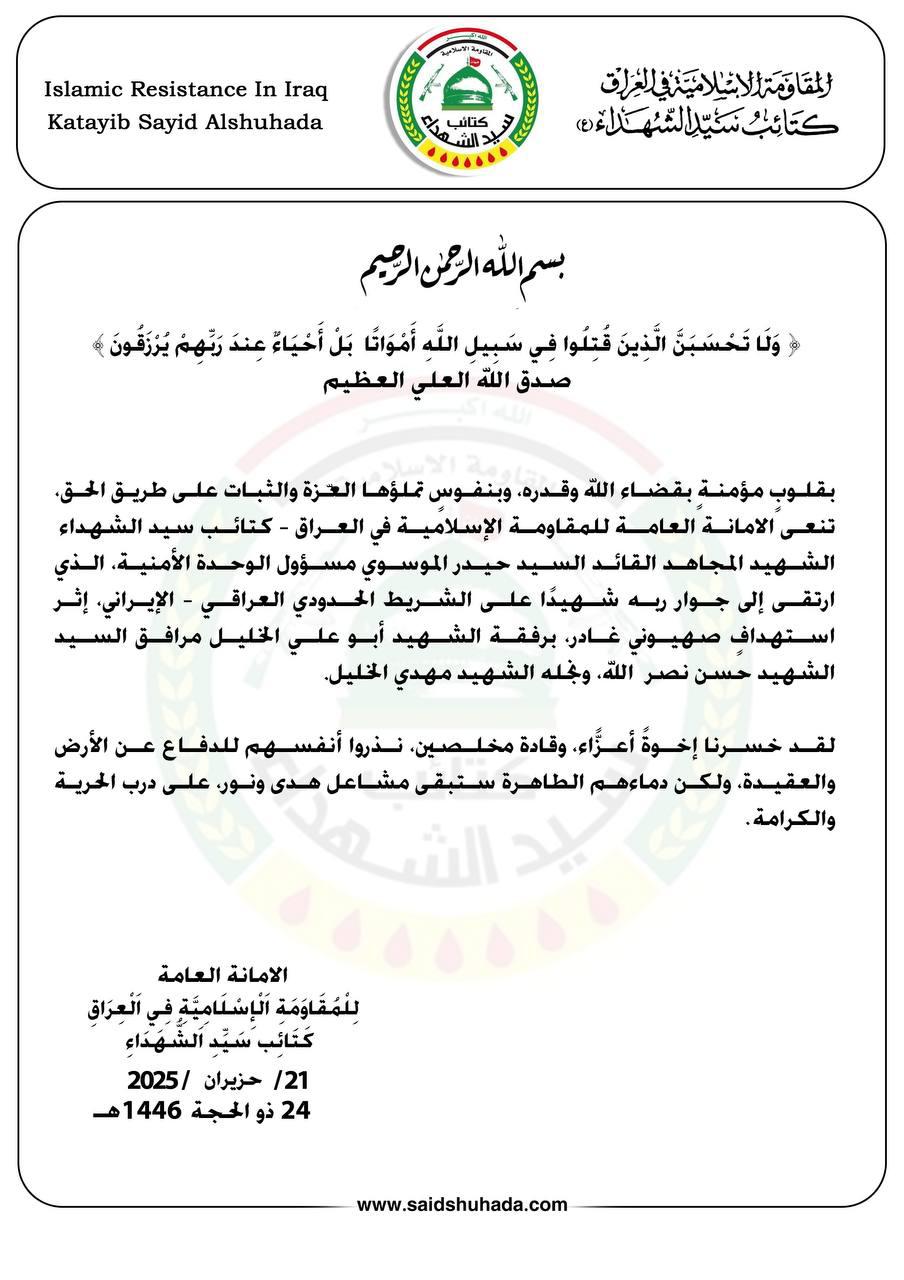
The subsequent commemoration of Musawi by the self-styled muqawama (resistance) produced some noteworthy moments that speak to his status—and also to the desperation of Iraqi groups to claim some share of involvement and sacrifice in the recent Iran-Israel war, though the reality is that they mostly sat out the conflict.
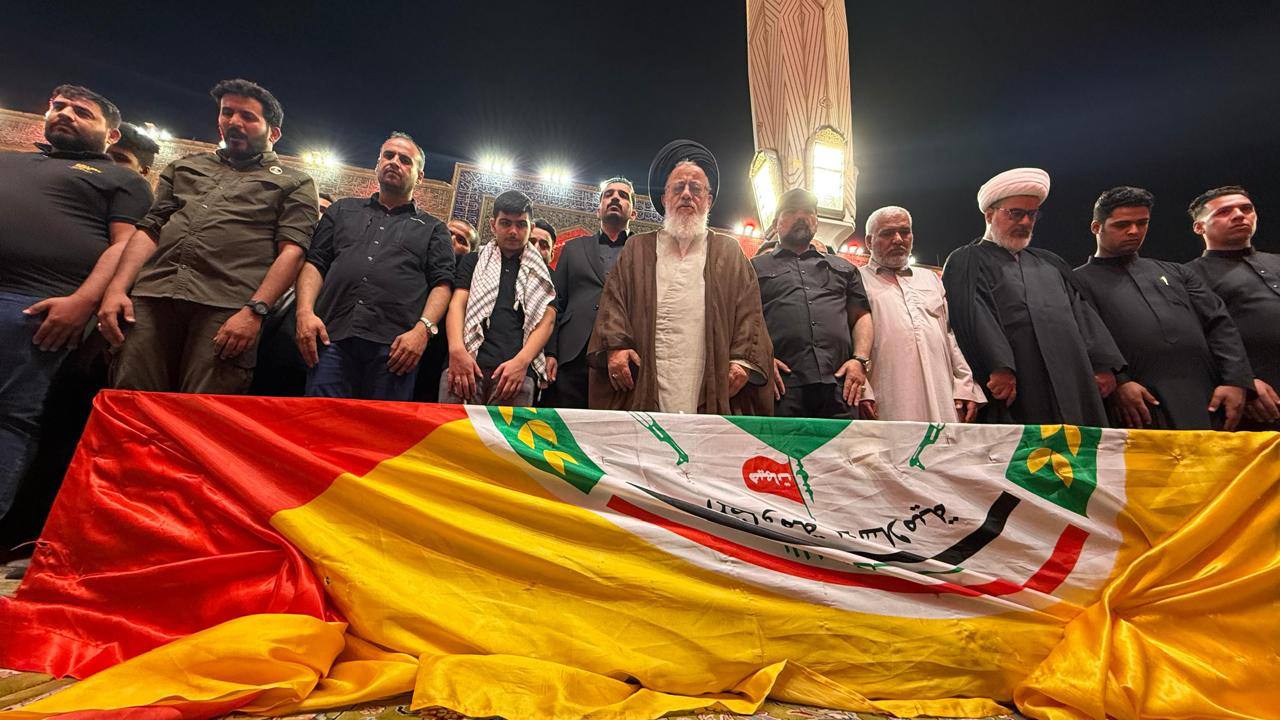
His funeral started on June 22 in front of the Popular Mobilization Forces (PMF) Media Directorate on Palestine Street, Baghdad, and was stretched out until he was buried in Najaf (as is the custom with muqawama fighters) on June 27.

Ayatollah Mojtaba al-Hosseini, the Iranian Supreme Leader’s representative in Iraq, prayed over his coffin in Najaf (Figure 2), while KSS leader Abu Ala al-Walai (aka Hashim Bunyan al-Siraji) was one of the pallbearers (Figure 3). The commemoration was attended by Mohammad Kazem al-Sadeq, the Iranian ambassador to Iraq and a member of the Islamic Revolutionary Guard Corps-Qods Force (Figure 4). The Russian ambassador to Iraq, Elbrus Kutrashev, also attended the funeral (Figure 5).
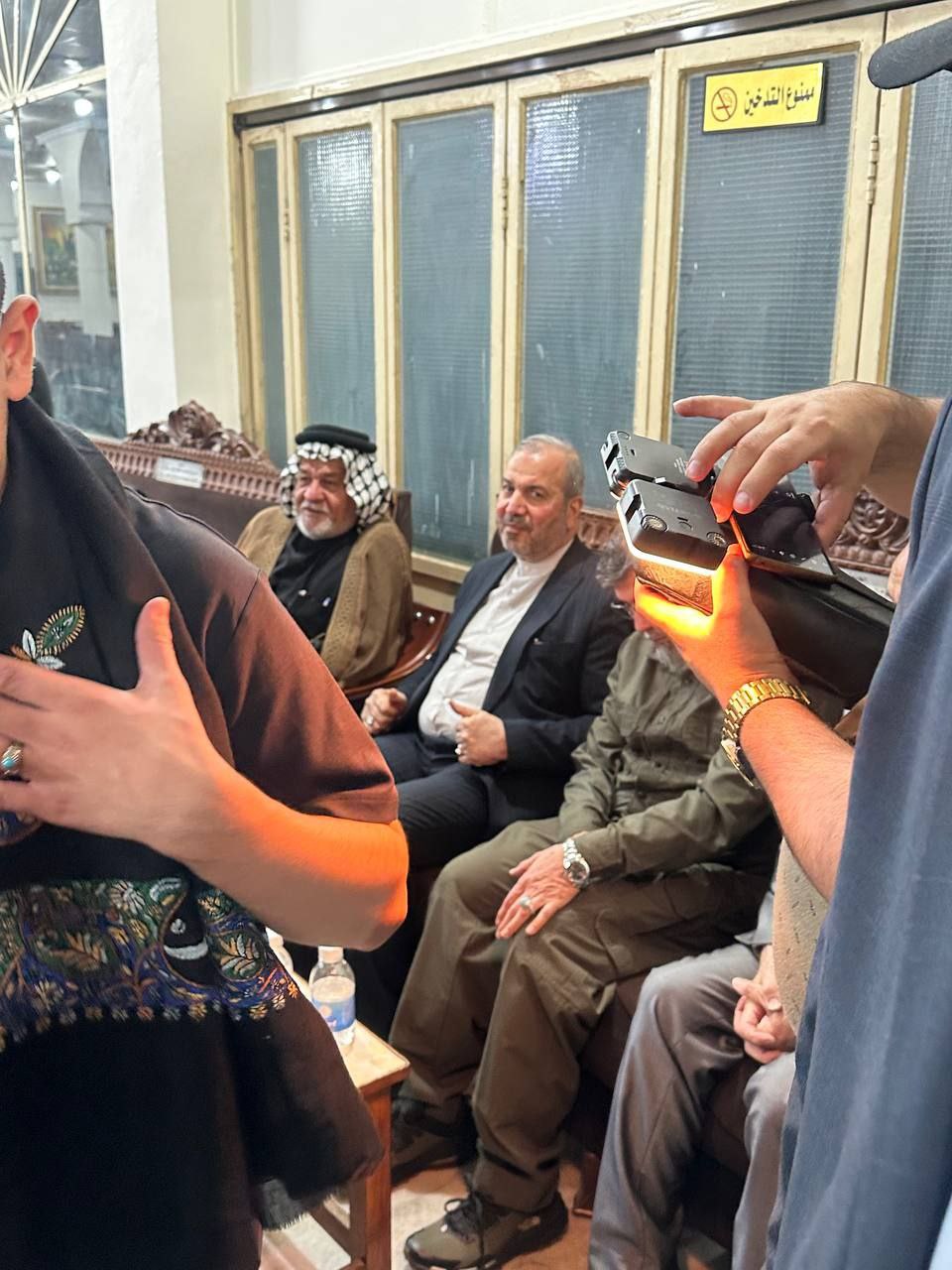
Underlining the longstanding KSS links to Syria, the Syrian Social Nationalist Party (SSNP)—a group with close ties to both the former Assad regime and Lebanese Hezbollah—issued a statement on July 2 lauding the important role that Musawi played in past military operations there (Figure 6). As Militia Spotlight has previously noted, SSNP has been calling for the formation of “a front to liberate southern Syria” since as early as December 2024.

Such connections and displays of solidarity support the view that KSS deserves close watching as a potentially significant armed proxy of Iran. If the Qods Force has decided to rejuvenate militant cells inside Syria in order to target Israel and the new Syrian government, then KSS would be on the short list of “go-to” options for assistance.
KSS might also assist with reestablishing land and air transportation to route people, materiel, and resources between Lebanon, Syria, Iraq, and Iran. This may have been the case with Abu Ali al-Khalil.

Finally, past investigations by Militia Spotlight indicate that KSS may have special territorial responsibilities for Iran-facilitated drone and rocket operations in areas north of Baghdad and east of the Tigris River. This role could become more important if new drone and rocket attacks are unleashed on U.S. bases in Iraq or on U.S. partners such as the Iraqi Kurds.

